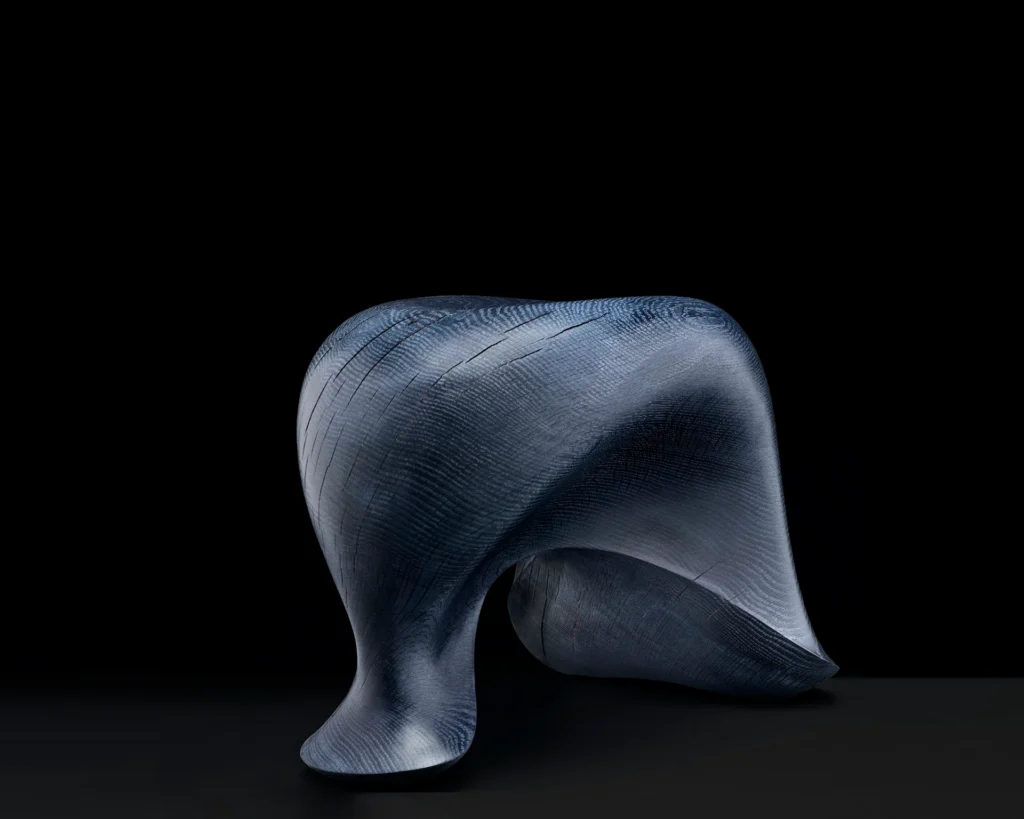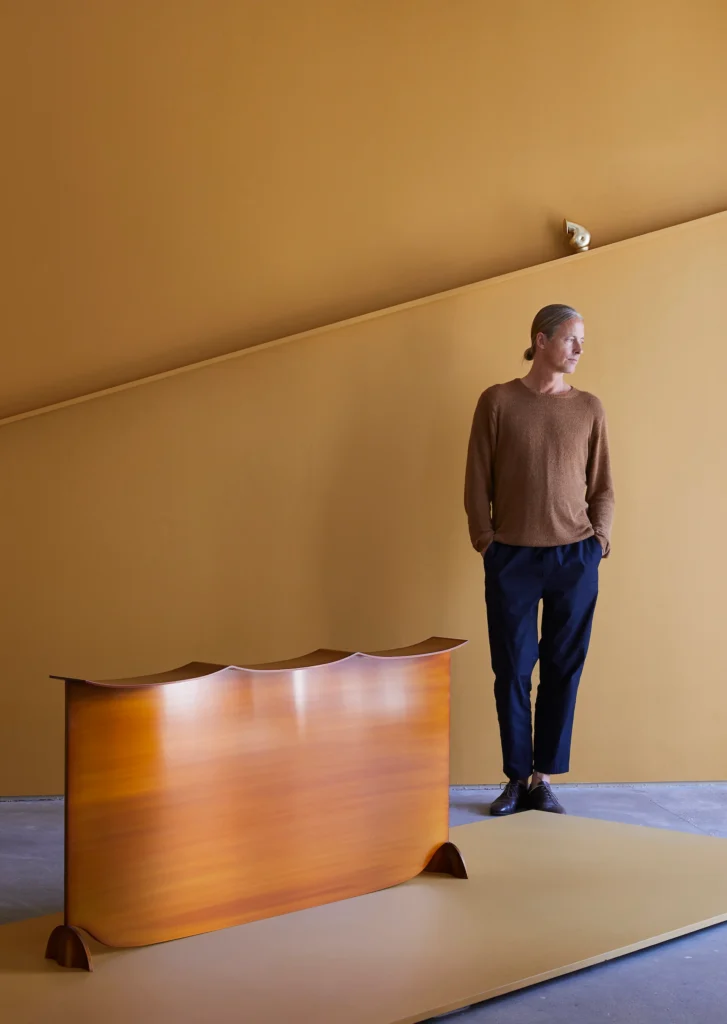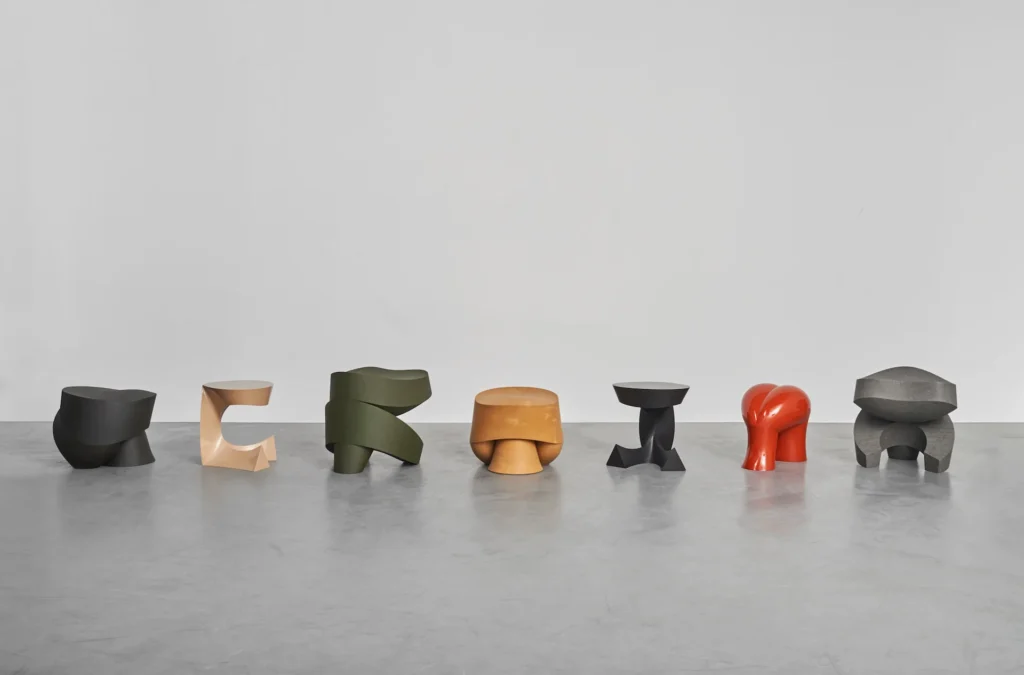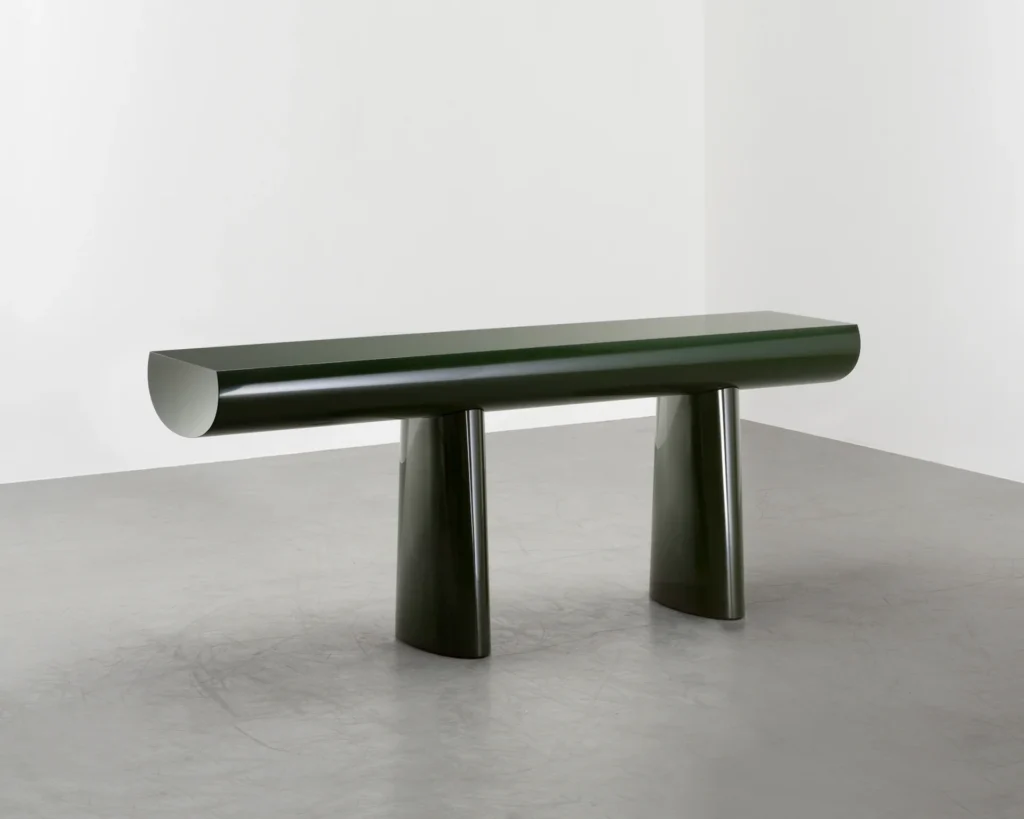
“We talk a lot—after all we are colleagues—but never listen to each other. I admire in Aldo an undisturbed tenacity; he develops without straying into side roads. In doing so, he follows his own intuition tightly, and the delusion of the day has no influence on his working method. I find his Schenkers to be highly conceptual, although he doesn’t want to hear about that. What I experience in these pouring vessels is that the action makes the user think and observe more consciously. Aldo shapes the use.”
—Gijs Bakker, avant-garde designer, cofounder of Droog Design, and Aldo Bakker’s father
When Gijs Bakker refers to his son Aldo’s designs as conceptual—as shapers of users’ actions and awareness—he knows what he is talking about. After all, Gijs has had a front-row seat to his son’s nearly three-decade-long career. At the beginning, when Aldo renounced formal education after failing out of three design schools, Gijs was admittedly worried. But now, having witnessed Aldo achieve one professional triumph after another, Gijs sees that his son was never destined to be a great student. He’s too individualistic to thrive within institutional constraints.
This independent spirit has led Aldo to become one of the most sophisticated, intriguing voices in contemporary collectible design today. As my recent Materials and Furniture: The Legends guest, Aldo offered the most personal and candid insights into his unique trajectory. Design is not an inherited profession like the crafts of the past, but it certainly runs in the Bakker family. Aldo’s mother, internationally renowned jewelry designer Emmy van Leersum, was as avant-garde as her multidisciplinary husband. In the 1960s and 70s, the two collaborated on groundbreaking jewelry collections that engage the human body in dynamic, provocative ways. Emmy sadly passed away in 1984, when Aldo was only 13. His memory of his parents’ working partnership—their passionate interactions and expressive discussions—has followed him his entire life. He said it was a privilege to be raised by such artistic role models.
After leaving design school, Aldo apprenticed at the Utrecht-based atelier of Willem Noyons, where he trained in silversmithing and jewelry making. This background would serve Aldo later, as he has sought out the best artisans—glassmakers, woodworkers, lacquerers, ceramicists, and stone carvers—to meticulously craft his highly challenging designs. In 1994, Aldo founded his design studio in Amsterdam. Unlike craftspeople, he told us, designers are on an eternal quest for the new, because innovation is foundational to design work. Craftsmanship, though, has become increasingly rare, he said, and finding makers who are willing to challenge themselves and work outside the box is extraordinarily difficult.
Aldo is unusual among his peers for sharing credit with the highly skilled craftspeople who execute his designs. He told us his relationships with makers are intimate and important, calling them “collaboration partnerships.” Aldo’s portfolio abounds with exquisite, fully resolved forms. He has in fact described his design approach as vormgever, meaning “form-giver” in Dutch. British-American mid-century furniture designer T.H. Robsjohn-Gibbings once remarked that if a designer achieves one successful form, then he has done his work. By this standard, Aldo has done his work many times over.
Aldo’s formal language is minimal, but not simple. Forget about the Minimalist art movement of the 1960s and 70s, which favored standardized, geometric forms fabricated in industrial materials. Neither does Aldo’s work relate to the neutral anonymity of 1990s Minimalist architecture. Aldo’s minimalist vocabulary is a wholly 21st-century expression—rich, dramatic, emotional, ambitious, and surprising. His colors are sumptuous, his materials luxuriant, all rendered through the highest quality craftsmanship. The narratives embedded in his designs, like his sources of inspiration, often remain concealed. In our conversation, he cited his love and respect for historical precedents, like 20th-century Italian maestro Carlo Scarpa’s oeuvre and the Amsterdam School’s low cost public housing from the 1920s. He said that historic buildings by architect Hendrik Petrus Berlage, father of the Amsterdam School, taught him composition and the transformational power of making tiny alterations to primary shapes.
The Schenkers—mentioned in his father’s quote above and the subject of a current exhibition at the Kunstmuseum Den Haag—showcase Aldo’s flair for creating objects that inject everyday rituals with new meaning, value, and intention. Aldo coined the name for this series of pouring vessels from the Dutch word schenken, which means both “to gift” and “to pour.” Whether crafted in porcelain, silver, copper, lacquer, or glass, whether commissioned by Jan Matthesius, Sèvres, or Frans Ottink, each one of Aldo’s Schenkers proposes a distinct manner of interaction. Harmoniously integrating spout, handle, and body in a unified whole, each organic form is reduced to its essence. The “art of the table,” a prime focus of Aldo’s practice, is reflected in a number of his pieces, which act as standing invitations for us to rethink the culture of dining.
Another signature typology of Aldo’s practice is the stool. As the scale of contemporary living has necessitated more flexible furnishings with smaller footprints, the stool has acquired a new authority—an art object that can define the soul of an interior. In his recent solo show at Carpenters Workshop Gallery, Slow Motion, Aldo presented a series of stools that illustrate the innovation and wide-ranging diversity that he has brought to the typology. I have to admit that my favorite is Tonus, a flowing form offered in wood, stone, and lacquer. The streamlined, polished design feels at once like a prehistoric relic and a treasured Brancusi sculpture. Its narrative meaning, of course, is ambiguous, since Bakker never discloses the backstory of his work. We can only guess how to read it from its name, the Latin equivalent to the English word “tone.”
Aldo is looking forward to his next exhibition, coming soon to Licht Gallery in Tokyo. Not only will this show heighten the visibility of his work among Japanese audiences, it will also honor the long relationship he’s had with Japanese material culture. He talked about his deep admiration for the harmonious compositions and “eternal quest for perfection” found in so many Japanese art forms, as well as the national dedication to supporting traditional craft materials and processes.
Many of Aldo’s designs feature Urushi lacquer, the ancient Japanese technique of coating surfaces with glossy tree resin, commonly used in sculptures and food-related objects. Some notable modernist pioneers discovered Japanese lacquer in the 1920s, such as Eileen Gray and Jean Dunund, and incorporated the technique in their designs. But the labor-intensive craft has been largely abandoned in Europe since. Aldo is one of only a handful of contemporary European designers to use it, often finishing foam forms in 30 layers of the natural resin.
How will history remember Aldo Bakker? If you ask him, the prolific Dutch designer would tell you that it will be for the fresh meaning and value that he has injected into familiar design typologies. For me, I think his place in the pantheon of design has been secured by the extraordinary way that his work speaks to a uniquely 21st-century zeitgeist: nuanced forms coupled with exceptional craftsmanship; the best of the past plucked and reinterpreted for the present. Even now, when he looks back on work from earlier in his career, even if he knows he would do things differently today, he must admit that everything he makes belongs to its moment perfectly. This article was published today in Forum Magazine by Design Miami/.






